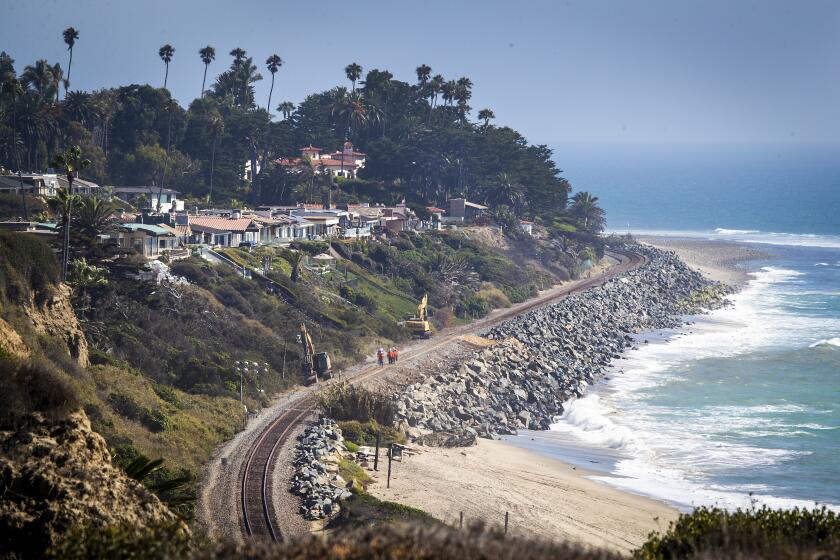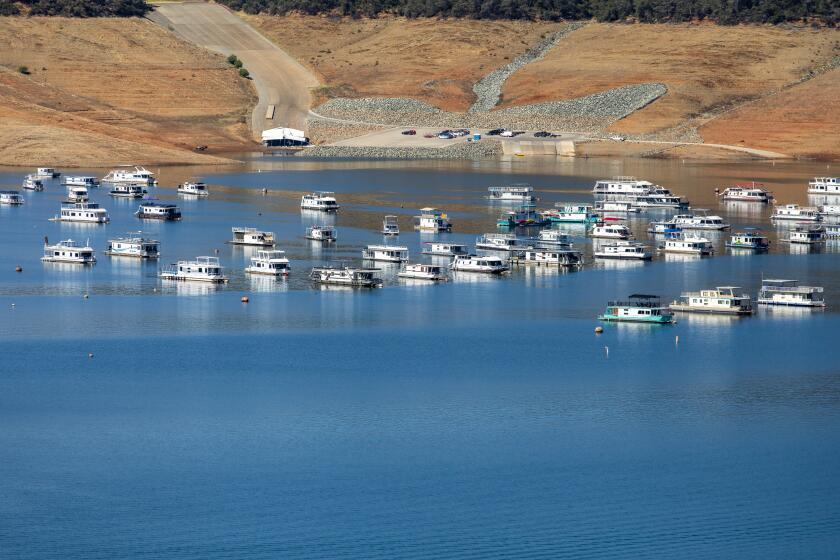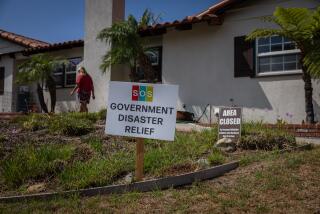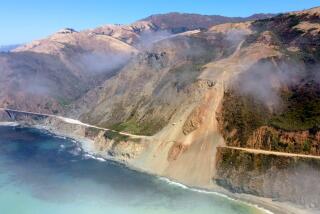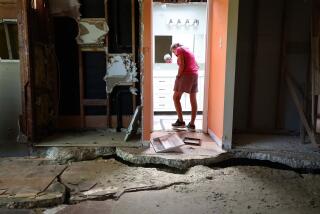How an ‘ancient landslide’ keeps threatening a railroad, homes in San Clemente
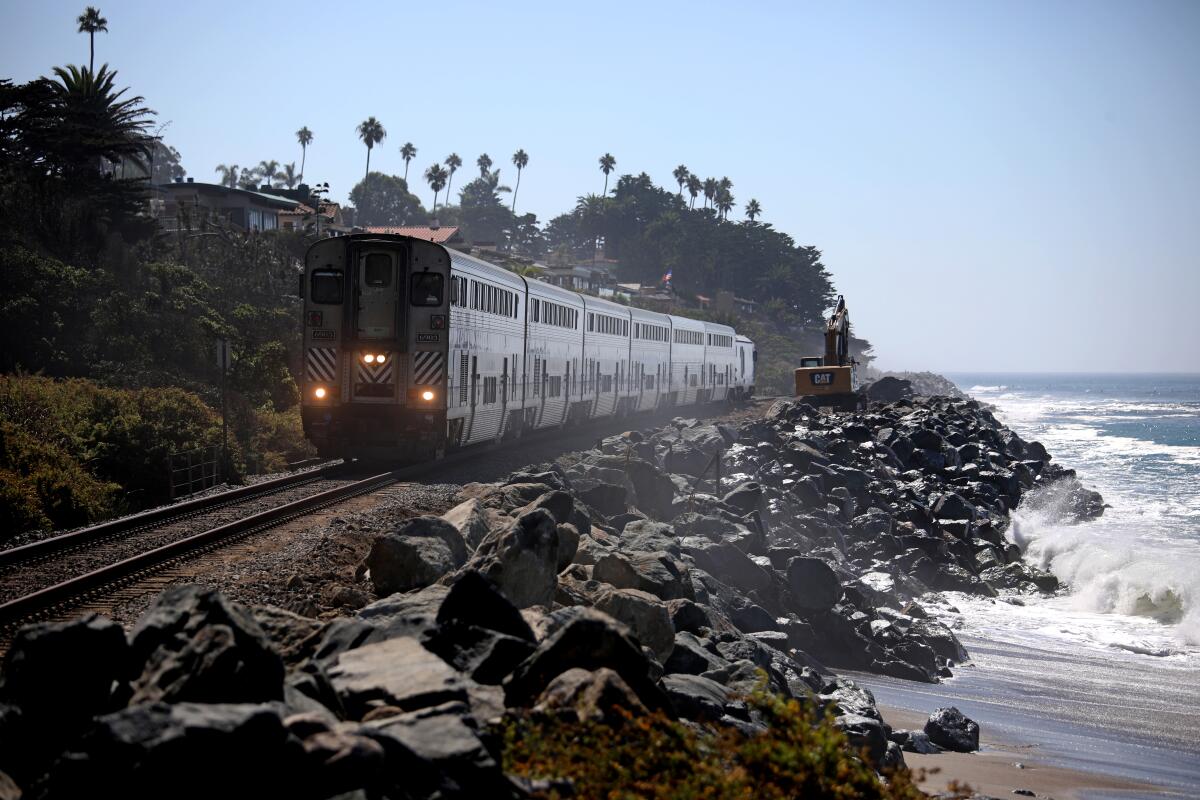
- Share via
When heavy rains and high surf from Tropical Storm Kay battered much of Southern California’s seaboard this month, the ground shifted — ever so slightly — under the railroad along San Clemente’s coast.
It wasn’t the first time.
The movement in the railway’s foundation caused short-term delays for Metrolink riders as officials attempted to mitigate the worsening erosion near the oceanfront rail line, threatened by a fragile landscape that also poses danger to expensive homes perched on a nearby bluff.
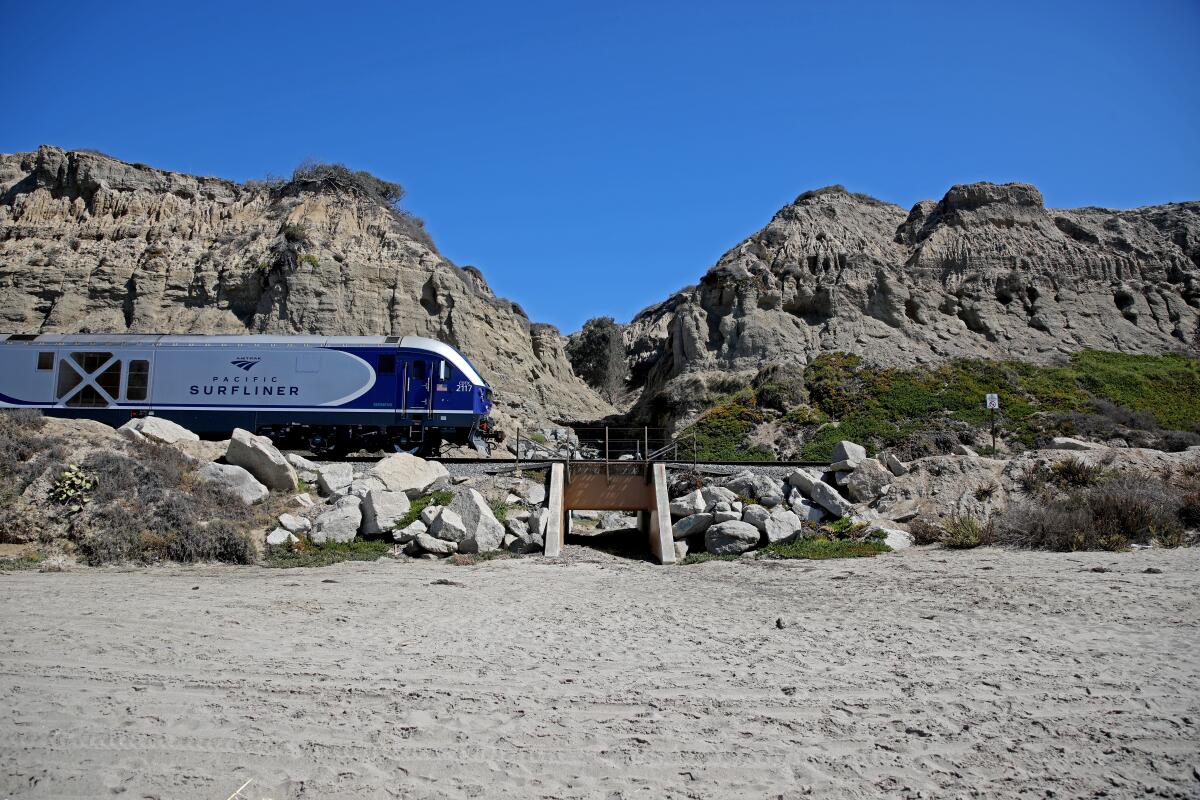
Officials say the stretch of coast is caught precariously between an “ancient landslide” and severe sand loss from erosion, development and climate change.
For years, “the sand was kind of buffering the base of the landslide,” said Joseph Street, a geologist with the California Coastal Commission. “And so, as the sand was lost … that was kind of the trigger for more movement on this ancient landslide.”
The forces at work along this beach and the rest of the California coast cannot, in the long run, be stopped by a stack of boulders.
The erosion has become an all-too-familiar story in recent years along Southern California’s coast, with shrinking beaches bringing nearby infrastructure — homes, roads, railways — much closer to the relentless ocean tides.
“This is just one location where they’re having trouble with beach erosion,” Street said, calling the threats to homes and the railway “symptoms of a larger regional problem with sand supply.”
Decades of development in the region has paved over sand and soil, which historically provided a natural buffer from the sea, and the sand loss has only worsened without much — if any — resupply of sediment from nearby rivers or after-rain runoff, both limited by years of drought.
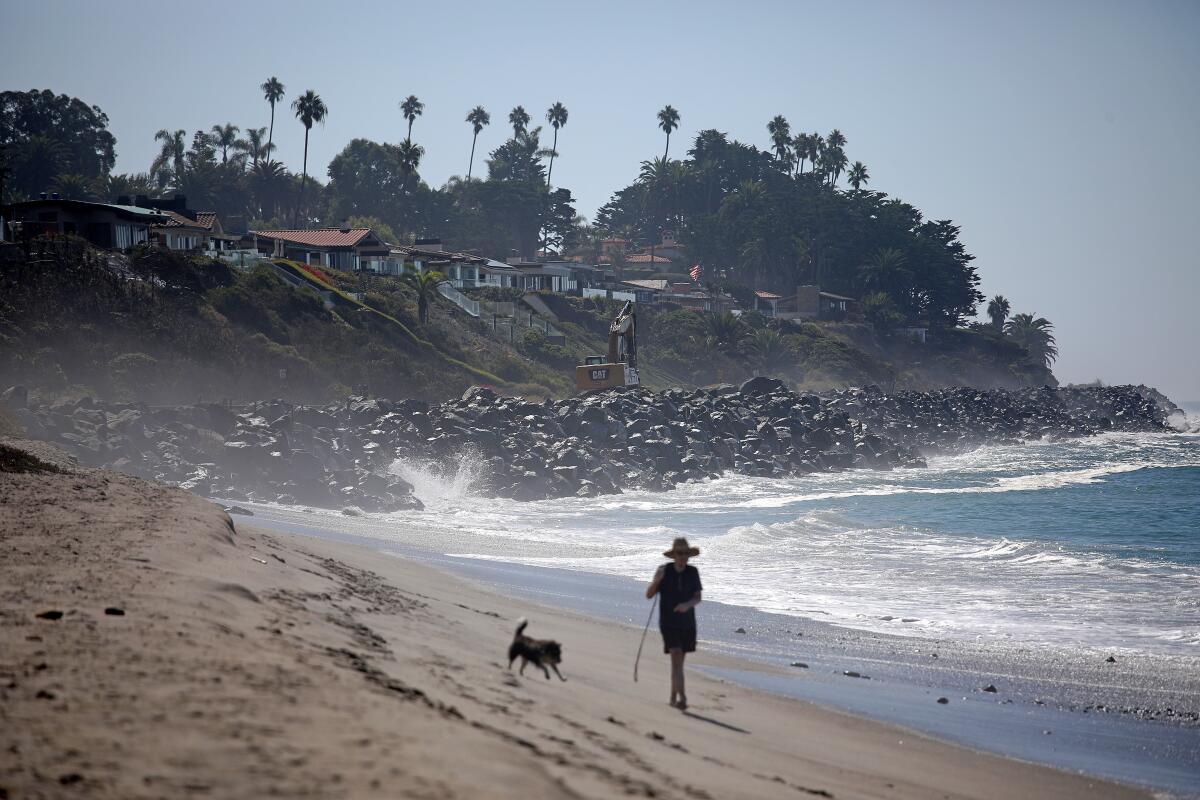
Steve Lang, a member of the Cyprus Shores Homeowners Assn., has been working with Metrolink to monitor any movement of the land. Already, at least two homes in the gated community built atop the filled-in landslide have been red-tagged, Lang said. And in a few others, cracks have appeared.
“The nexus of all this problem is beach sand loss,” Lang said. “All subsequent issues stem from that…. We need sand, we need beach sand replenishment — not just Cypress Shore, but all of south Orange County.”
It’s been almost a year since the same stretch of railway, a key commuter link for many across the Southland, closed after more extreme ground movement. Last October, Metrolink brought in more than 10,000 tons of large rocks to serve as a barrier between the railway and the ocean, an attempt to secure the picturesque section of the train tracks.
“The rock has two functions: One is to protect against waves hitting [the railway] directly, but also, basically as a counterweight to the landslide movement,” Street said.
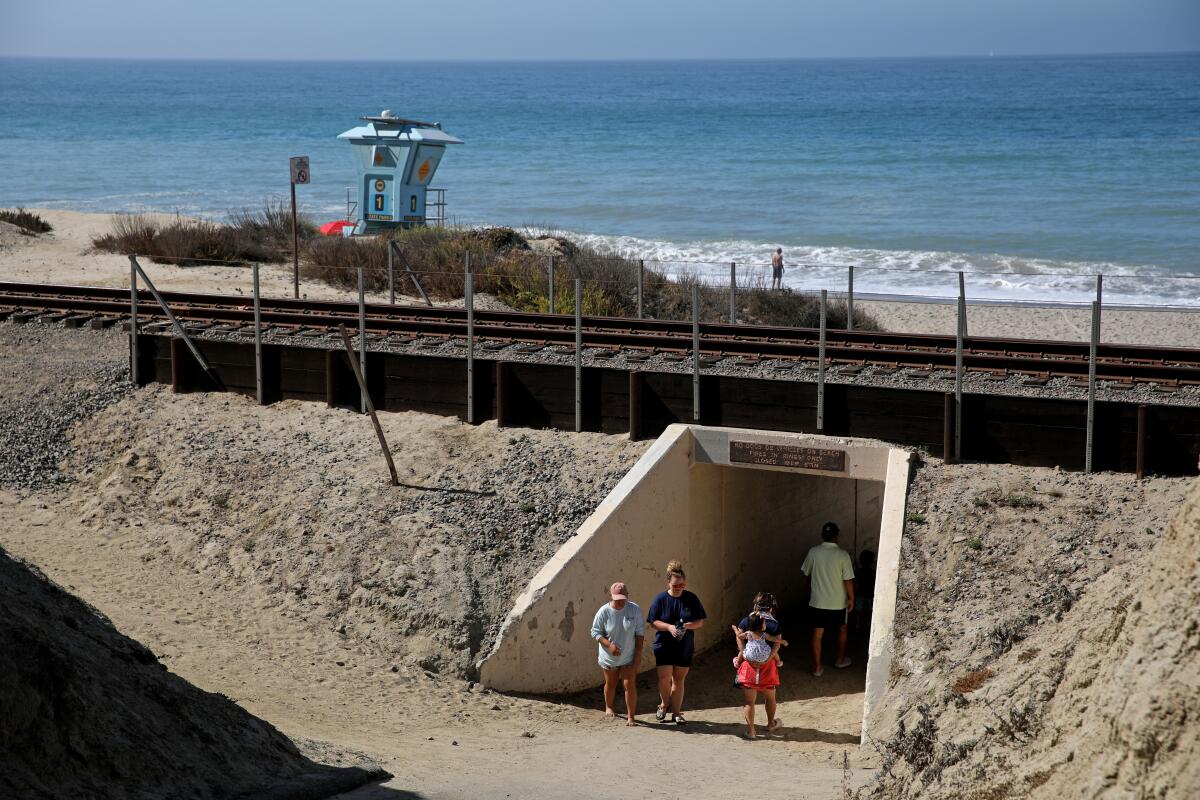
After detecting the “slight movement” in the railway’s foundation Sept. 9 — the day Tropical Storm Kay brought storms to Southern California — Metrolink again added large boulders, known as “rip rap,” between the rail lines and the ocean, said Metrolink spokesperson Scott Johnson. He said more than 1,600 tons of the rock were placed in the area that following week, and expects more to be added through Sunday.
“Metrolink staff continues to proactively inspect the tracks and monitor the area,” Johnson said. “Metrolink has installed a series of monitoring devices that recognized slight movement of the right of way, or foundation, near the track. The movement is measured in hundredths of an inch.”
More dryness, extreme weather events and water quality hazards are likely in 2023, state water officials said Wednesday.
Johnson said there have been no other major improvements to the area’s stability since the railway’s shutdown last fall, but the agency is working with the Orange County Transportation Authority to identify long-term solutions.
After the tropical storm, Johnson said, there were delays of up to 30 minutes on Metrolink’s Orange County line and Inland Empire-Orange County line for a few days, while officials reduced train speed “as a precaution.” He said there have been no delays related to the San Clemente stretch since Sept. 12.
Street said Metrolink is working with the Cyprus Shores Homeowners Assn., as well as local officials, to stabilize the landslide while doing “longer-term planning and studies to figure out something that could be called more permanent.” He said he wasn’t sure what that will look like, but officials have considered moving the railroad away from the coast.
“The [California Coastal] Commission is committed to trying to maintain public access here, protect the beach, while also recognizing the importance of this railroad corridor and also protecting the private homes in the area,” Street said. “We have to try to balance those objectives. We would like to see something that protects and stabilizes the railroad while minimizing impacts to the beach; what that looks like over the long term is unclear.”
Tim Brown, a former San Clemente mayor who is now working with Cyprus Shores on sand erosion, said the problem has only gotten worse in the last year.
“This is an issue that isn’t going away,” Brown said. “This issue is going to continue to stalk the beaches and these areas.”
More to Read
Sign up for Essential California
The most important California stories and recommendations in your inbox every morning.
You may occasionally receive promotional content from the Los Angeles Times.
